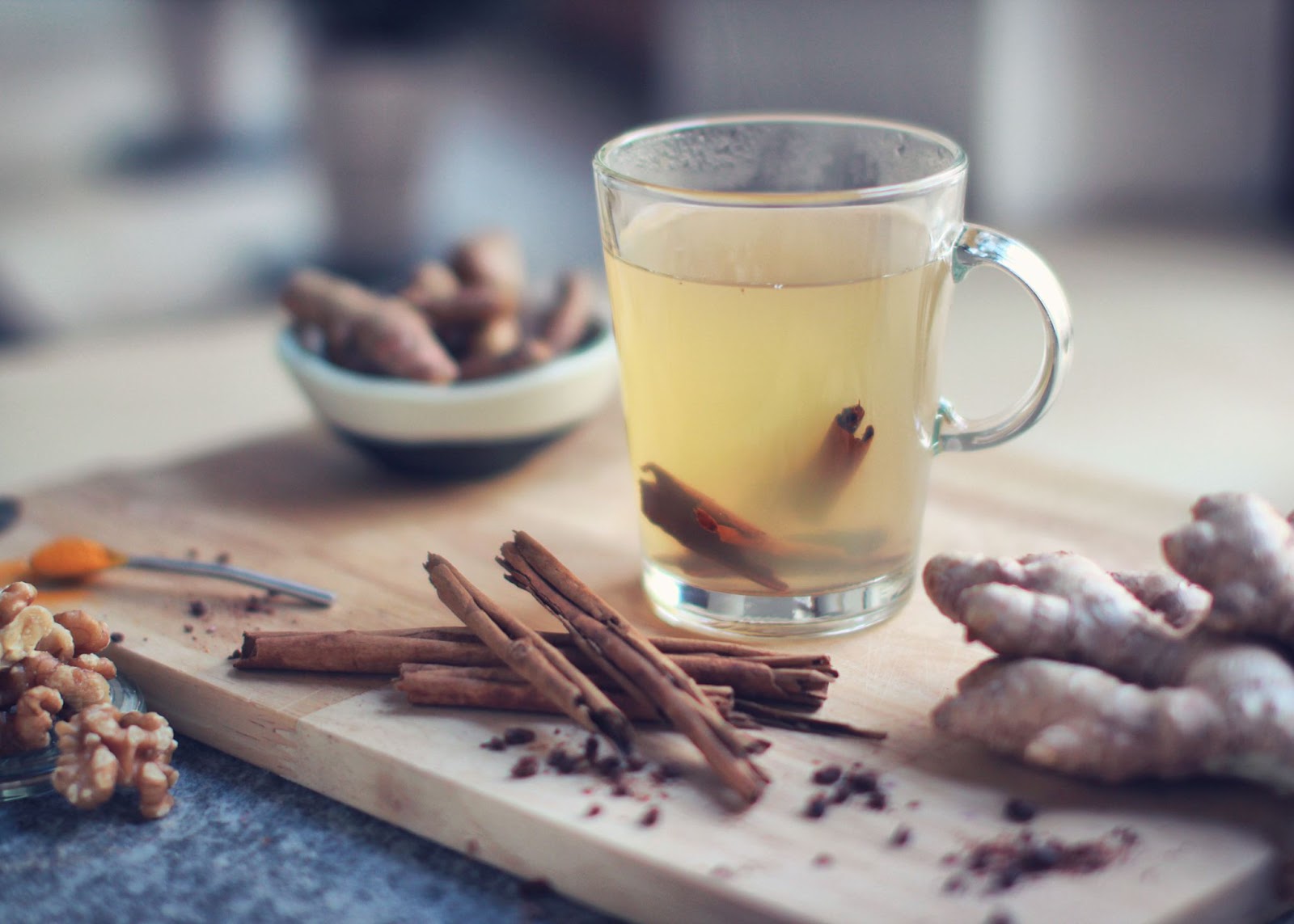(Source: Julia Topp via Unsplash.)
Did you know that there are many types of fungi living in your digestive system? It’s harmless in small amounts. But when fungi like Candida start to grow out of control, it can lead to infections. In this article, we’ll spill the tea on what Candida is, and some types of candida tea to help cope with the condition.
What is candida?
The correct term is candida albicans, but this yeast is commonly called candida. It is a species of yeast that is naturally present in and on your body. Candida causes more fungal infections in humans than any other species (1).
Where is it present?
Microbes are common on your skin and in your gastrointestinal tract, but sometimes they can grow and multiply out of control. This can lead to many symptoms.
This particular type of yeast, candida albicans, lives on your skin, and in various warm or moist areas of your body. These include your mouth, gut, rectum, and in women, the vagina (2).
Is candida tea bad?
If it is so common, why don’t we experience candida overgrowth all the time? You can thank other ‘friendly’ bacteria for that. These helpful microorganisms keep candida colonies in check and make sure they don’t cause any problems.
In the right amounts, candida albicans can even be helpful. It assists with digestion and nutrient absorption.
The answer to the question “is candida bad” — no, as long as the fungus does not multiply out of control.
Candida overgrowth
If, however, candida does multiply out of control, you are said to have a condition called ‘candidiasis’.
Candidiasis is also known as candida overgrowth, thrush, and yeast infection.
Causes
Candida overgrowth can be caused by a combination of any number of things, but most causes can be put into one of two categories:
- Your immune system is compromised; or
- Your healthy bacteria levels are disrupted.
Aside from these broad causes, there are some specific causes you can attribute candida overgrowth to as well.
- Diabetes
- High alcohol intake
- Eating lots of sugar and refined carbs
- Taking antibiotics
- Taking oral contraceptives
- High stress levels
Symptoms of candida.
Candida overgrowth, being a fungal infection, has a distinct set of symptoms. Here are the most common ones.
1. Digestive issues
It is normal to have small amounts of candida in your gut. An overgrowth, however, may cause various symptoms such as constipation, diarrhea, nausea, gas, cramps, or bloating.
2. Joint pain
An untreated Candida overgrowth may spread to your bloodstream. This leads to Candida infecting your bones and joints, which causes swelling and ultimately stiffness and pain.
3. Oral thrush
Too much Candida in the mouth may cause white, bumpy patches (also known as lesions). There may also be some redness, swelling, pain, and difficulty swallowing. This condition is also known as oral thrush.
4. Recurring UTIs
Candida is not uncommon in women’s genitals, although it is less so in men’s. An overgrowth can cause urinary tract infection and vaginal thrush. Both these conditions can cause pain and discomfort.
5. Sinus infection
Did you know that most chronic sinus infections are attributed to fungi? However, if your sinus infections last longer than a month, it may be caused by Candida.
6. Fungal infections in nails or skin
A Candida overgrowth on the skin can cause you to have athlete’s foot, ringworm, nail fungal infections, and other similar conditions.
7. Tiredness and fatigue
Candida isn’t directly tied to feelings of tiredness and fatigue. However, both of these conditions may be caused by a weakened immune system — which is a perfect setting for a Candida overgrowth. Candidiasis also affects how your body absorbs vital nutrients such as magnesium, which are necessary to feel energetic.
The candida diet.
While you can take many approaches to overcome candidiasis, the most effective method by and far is through a strict diet.
There are several steps to this “candida diet”. The most important is switching to a low-sugar diet. This will deprive the Candida fungi of its food, hindering its spread and growth.
Eventually, you will start incorporating food items like beans and starchy vegetables back into your diet. But until then, you might want to try probiotics and antifungals. The former will repopulate your gut with “helpful” bacteria, and the latter will attack candida cells more directly.
A good way to start your candida diet is with a cleanse. This will clear any built-up toxins in your system, and aid your liver in its cleansing process.
But just because you have to stick to a regimented diet, doesn’t mean you can’t treat yourself to some refreshments. Up next, we’ll be looking at four types of candida tea to stay energetic in your fight against this foul fungus.
4 best types of candida tea.
Why drink candida tea?
It can seem daunting to cut back on your daily hit of caffeine. But if you’re suffering from candidiasis, it might be a smart choice.
Caffeine may affect your body’s ability to combat a growing Candida population. This is due to the fact that caffeine has a detrimental effect on the immune system (x).
The energy-giving drug also causes your blood sugar to spike. And a blood sugar spike means more food for the Candida to flourish.
With these reasons in mind, let’s look at some alternatives for regular tea (or coffee) that you can enjoy while on a candida diet.
Decaff tea (or coffee)
The obvious first choice is your regular morning beverage — minus the caffeine.
Decaff tea or coffee is a good way to ease into the habit of drinking another more potent kind of candida tea every morning.
Since decaff still contains a bit of caffeine, you’ll find the transition to be less jarring.
Green tea
Green tea takes a multi-pronged approach to help with Candida.
First, it’s one of the best teas for improving the health of your gut. This is thanks to its high levels of catechins and antioxidants.
At the same time, it has a substance called L-theanine. This amino acid promotes sleep and cortisol secretion (x). It has even been shown to counteract the effects of caffeine on your body. You’ll be getting an almost zero net caffeine hit from green tea.
Chicory coffee
If you’re a fan of bitter coffee, you’ll love chicory. Instead of being made from leaves (like tea) or beans (like coffee), chicory coffee is made from the roots of the plant.
Chicory coffee doesn’t taste too far off from regular coffee. It’s just a bit more bitter. This is good for you, though — the bitter taste stimulates the production of enzymes that regulate your digestive system.
Herbal teas
Herbal teas are a great way to incorporate a candida tea routine into your diet.
These teas help you with candidiasis in two ways. First, many herbal teas can help you with gas and bloating. Second, sipping on a herbal tea throughout your day will help you fight your caffeine craving.
Here are a few herbal teas you can try out as your regular candida tea:
- Nettle leaf tea
- Ginger tea
- Chamomile tea
Other drinks for candida.
But what if you just aren’t a tea person? What if you’d rather drink a glass of fresh juice in the morning, or a serving of a fruit smoothie after your workout?
We’ve got you covered. Here are some alternative drinks you can toss back without hurting your candida diet.
- Avocado smoothie.
- Almond milk.
- Green juice.
- Veggie juice.
- Avocado apple smoothie.
You can find plenty of recipes for these on the web. Just be sure not to add too much sugar, as that will derail your candida diet. If, however, these recipes seem to call for more sugar than you’re comfortable with, you can always try switching to a candida tea alternative.
Final thoughts.
Candida is a common fungus in and on the human body. But it can grow out of control, leading to a fungal infection known as candidiasis.
A candida diet is the best way to overcome a candida overgrowth. But if you are finding it difficult to follow a strict diet, you can start with an easy step in the right direction.
The easiest way to get started on a candida diet is with a candida tea. We’ve listed a few in this article, but you can always find more online.
If you or someone you know is suffering from Candida, let them know that the cure isn’t as hard as you’d think. A cup of tea here, a little less sugar there, and you’ll be Candida-free in no time.





